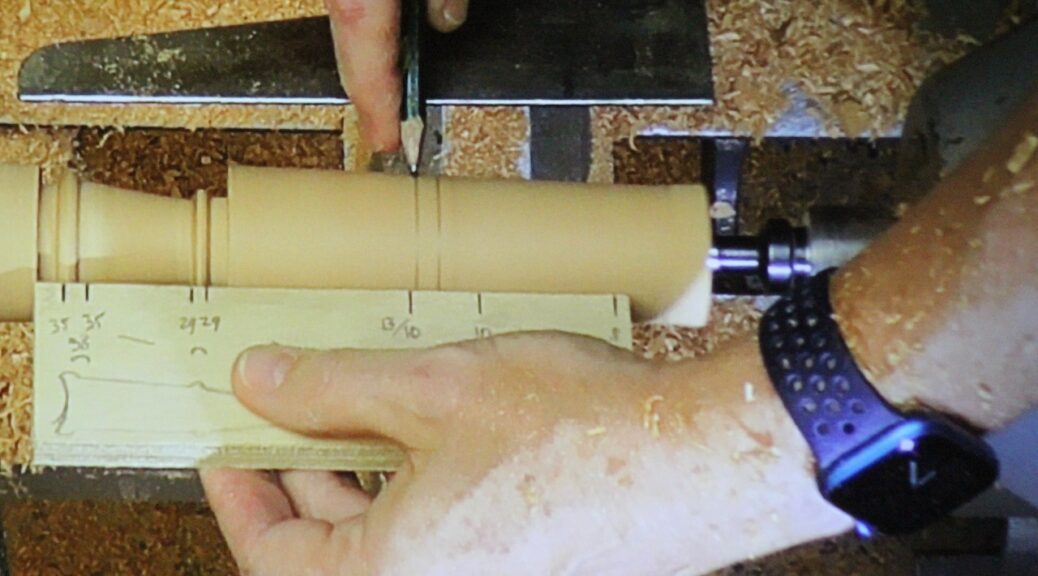Club Meeting: 8 Feb 2023
Report by: Kevin De Freitas
The Kendama is a variation on the Cup and Ball toy or a variant of the French game bilboquet.
Holm had presented one that he made last year at the club.
Part 1 – Turn a sphere.
Although there are many techniques to turn a sphere, Holm chose the method of turning a cylinder then increasing the number of facets until a sphere is reached. He demonstrated the use of a gauge that specifies the position of cuts to make octagon (8 sides) and then hexadecagon (16 sides) shapes. (Metric template available on website)
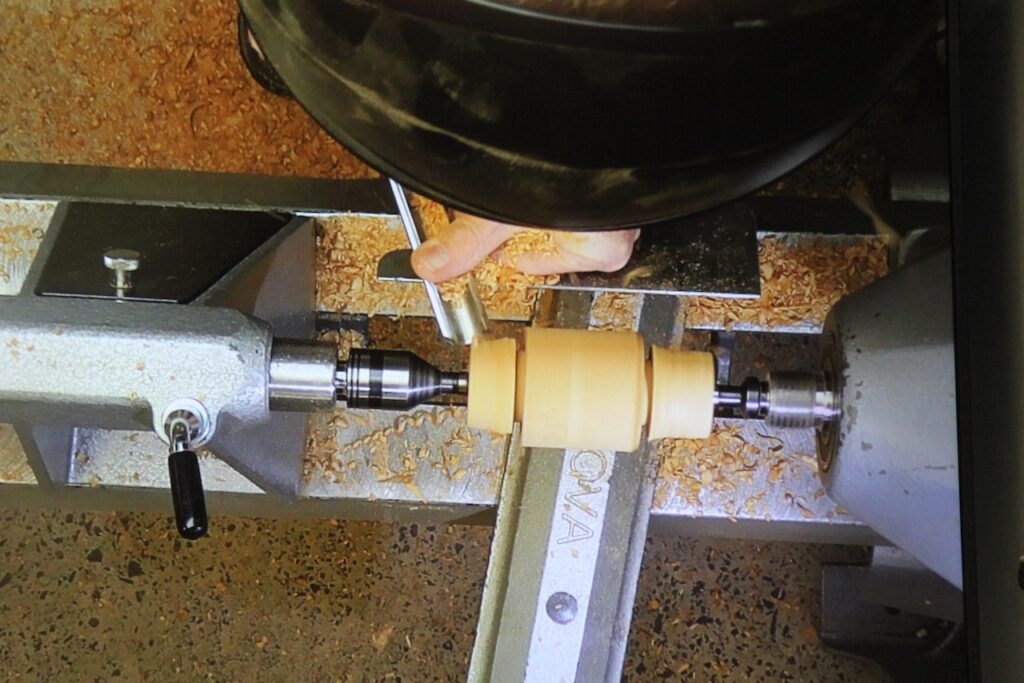
To turn a 60mm diameter sphere, start with a 120mm long square block slightly wider than the 60mm desired size. Mark the centres on each end.
Mount the block between small step centres. Make the block round and bring down to 60mm with a spindle roughing gouge.
Mark lines 60mm apart centrally on the cylinder and part down the waste side of each line ensuring you stay at right angles to the axis. A square cut is needed to keep the outer dimension of the sphere at 60mm. Turn away the waste leaving a spigot. Here is where the smaller steb centres are important – i.e they will not obstruct the formation of thinner spigots as the sphere develops.
The audience suggested that a centre line is required for later reference but, as we saw, this was not in fact needed with this technique.
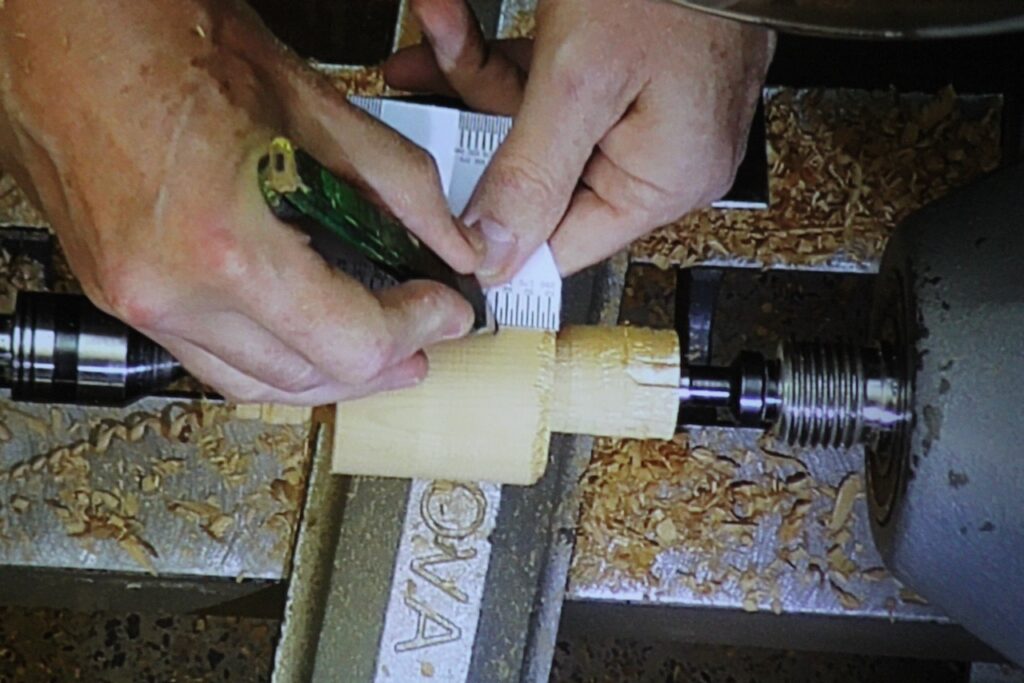
Using the gauge, Holm then marked off the lines for the 45 degree cuts and using a spindle gouge, turned off the corners to form the octagonal shape. Holm suggested to use a gouge with a 45 degree bevel so that one could approach the wood with the gouge perpendicular to the wood. Check that all parallel faces are 60mm and remove additional wood if required.
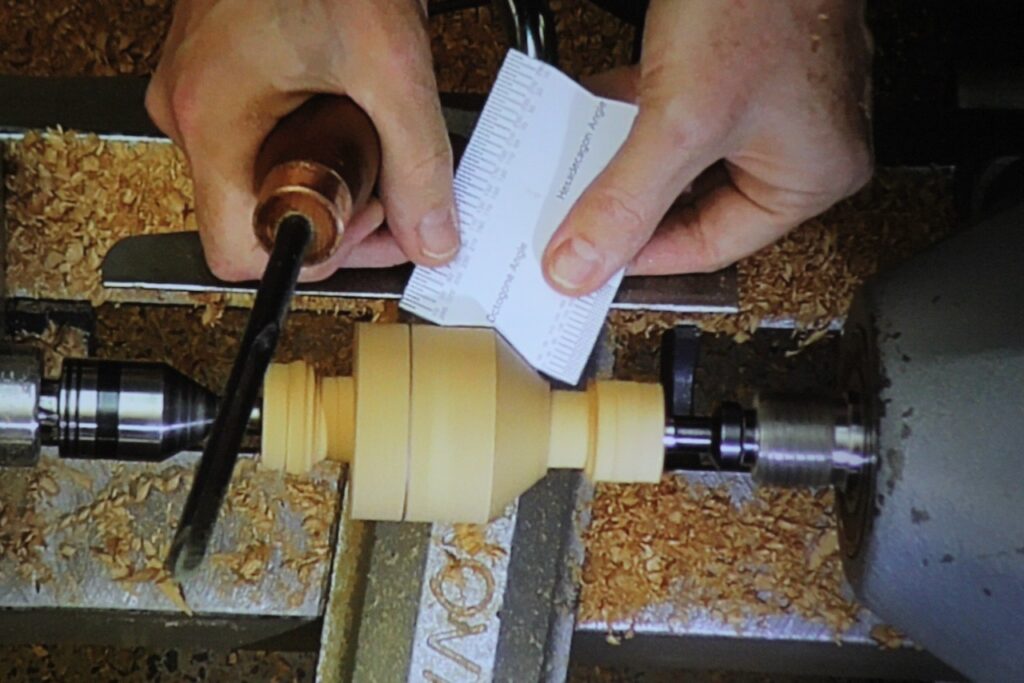
The next step is to make the lines denoting the cuts for the 22.5 decree cuts. Then turn off the corners to form the 16 sided shape. Here Holm needed to reduce the size of the spigot to accommodate the extra cuts that are closer to the axis.
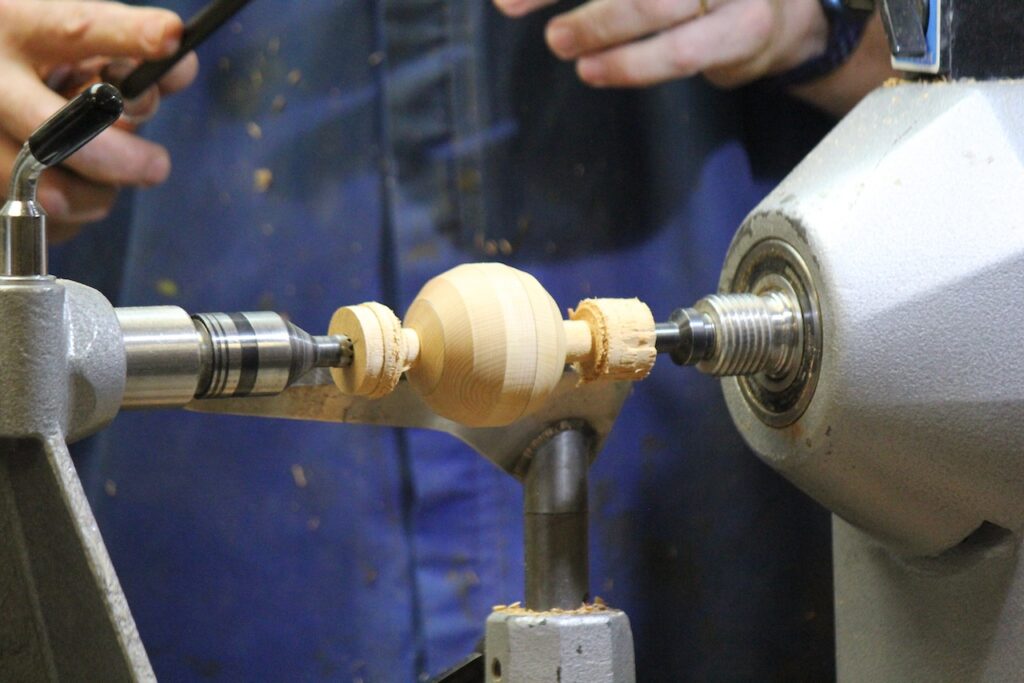
Next, carefully remove the remaining points to get a close approximation to a sphere. Cut through the remaining spigots with a saw being careful not to tear out any end grain.
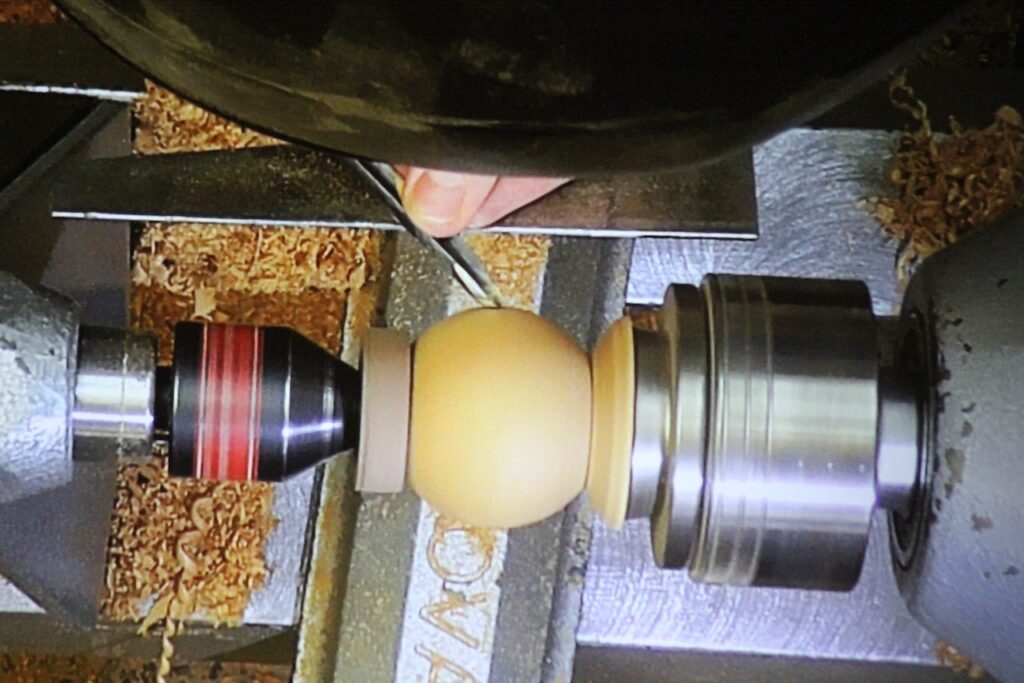
Mount he sphere between cups and turn off the stubs of the spigots, then sand the sphere alternating gran 90 degrees each time.
Part 2 – Turn the cross Piece
Start with a blank 120mm long and 50mm square mounted between centres and turn round. The final piece is 70mm long and the two cups are different sizes.
Starting with the larger cup, at 44mm diameter, turn the blank down to this dimension.
Mark off the ends and make a partial parting cut on the waste side. Mark the widest part of the large cup and turn the taper towards the rim. Then turn the base of the cup and curve towards the centre of the piece.
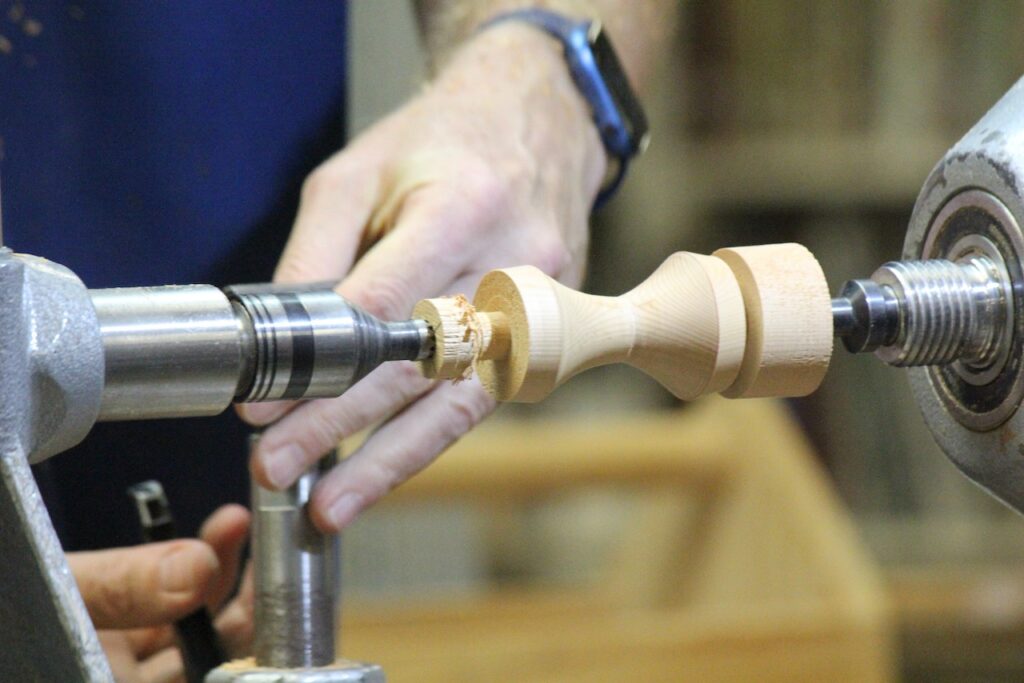
Turn the smaller end down to the diameter of the second cup, mark the widest part and taper towards the rim as before. Complete the central portion turning down to the 19mm diameter of the thinnest part, using the previously made sphere as a guide to the curve.
Part the spigots down as thin as can be done safely and clear all waste to gain access to hollow the cups. With a bowl gouge, hollow the cups as much as possible. Flip the piece and hollow both cups.
Remove the piece and finish the hollowing with a curved chisel or rotary carving tool.
Drill a 9mm hole in the centre of the cross piece.
Part 3 – make the Vertical Cup and Spike part.
Start with a block 200mm x 40mm square to make a final piece 160mm long.
Turn down to 35mm dimension.
Mark the positions of the ends and the cup then turn the outer part of the cup as before.
Start to turn the taper and make decorative beads along the length where desired.
Remove waste progressively whilst reducing diameter along the length towards the chuck. This provides as much support as possible. Holm demonstrated that if there is vibration then you can support the piece with one hand while cutting with the other.
Before getting too thin, remove most of the spigot and hollow the cup.
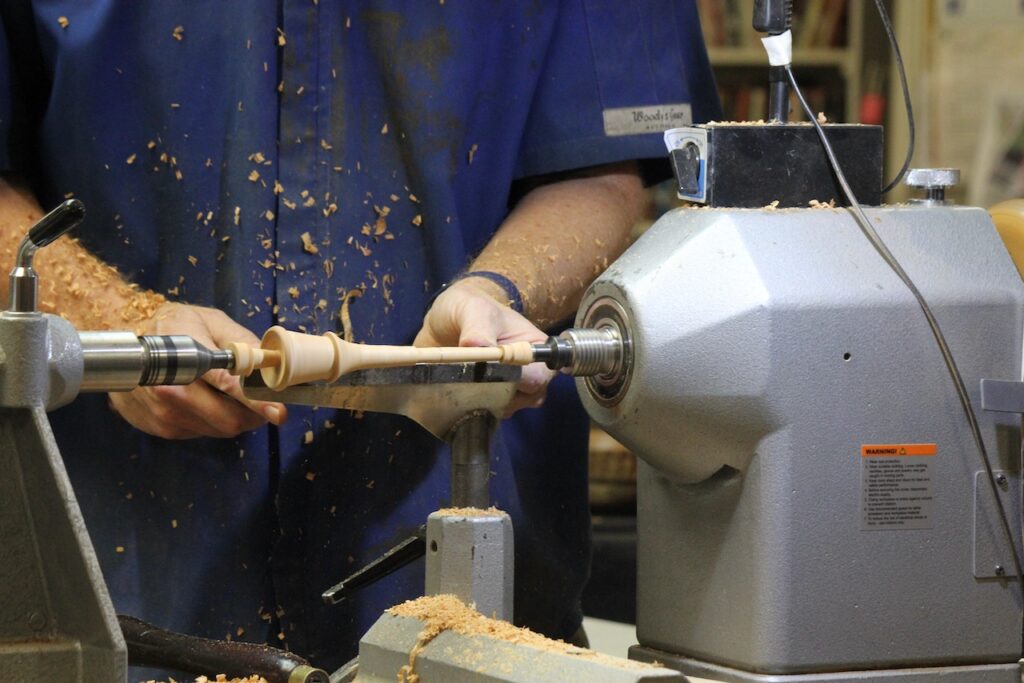
Turn down to 13mm and step down to 10mm to create a seat for the cross piece. Continue the 10mm diameter for 20mm then taper towards the tip at 8mm. (see diagram for detail)
Sand the piece and shape towards the point before turning and breaking through at the point. The point is then refined off the lathe with sandpaper.
Add the string and assemble. Holes may need to be adjusted to get a tight fit.
Kendama Dimemsions
Sphere Template Instructions
Sphere Template
